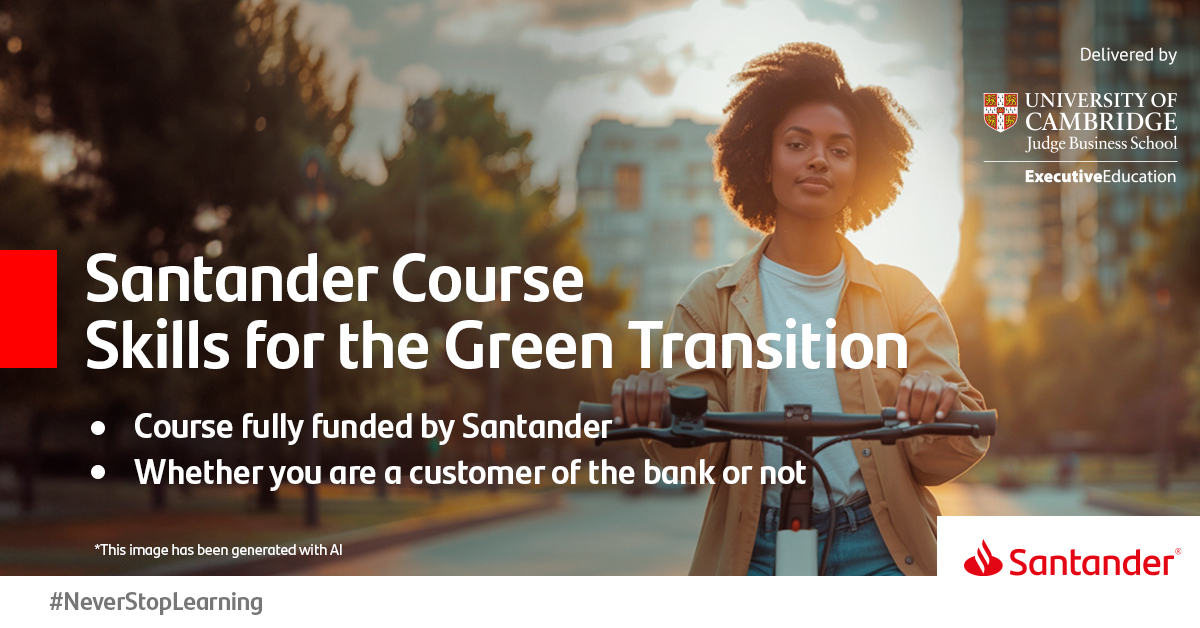Sustainable marketing: what it is, principles, the 4 Ps, and its importance
Did you know PwC’s 2024 Voice of the Consumer Survey found that 80% of consumers are willing to pay more for sustainable products? When asked how much more, the consumers told researchers they found a 9.7% sustainability premium acceptable on average. But the study also echoed earlier Harvard Business Review findings that inflationary pressures mean that consumers still find it difficult to act on their good intentions. Companies must, therefore, balance affordability with sustainable offerings, and mitigate any margin reduction through effective communication of their effort. This is where sustainable marketing comes in.
Sustainable marketing isn’t just about promoting eco-friendly products; it’s about creating long-term environmental, social, and economic value. By aligning profitability with responsibility, businesses can thrive in an ever-evolving marketplace.

What is sustainable marketing?
Sustainable marketing is a strategy that focuses on promoting products and services in ways that prioritize long-term environmental, social, and economic well-being. It involves aligning marketing efforts with sustainability principles to create value for both the company and society as a whole.
The term encompasses three priorities in the commercialization of products:
Sustaining profitability is the most traditional objective: a marketing strategy should not cannibalize future business.
Environmental responsibility. More recently, growing concerns about the environment have placed an emphasis on the importance of the long-term consequences of business activity on the natural environment; independently of profit, companies must endeavor to reduce their ecological footprint.
Social well-being. Finally, the social dimension of sustainability concerns priorities that go beyond environmental protection. The commercialization of products must not undermine the well-being of society as a whole, including employees and consumers.
As such, sustainable marketing has become a key facet of the environmental, social, and governance (ESG) dimension of Corporate social responsibility (CSR).
Difference between green and sustainable marketing
Green marketing and sustainable marketing both focus on environmental and ethical considerations but differ in scope and objectives.
Sustainable marketing is a broader concept that encompasses the respect for the natural environment inherent to green marketing but also considers other social impacts. For example, while manufacturing tobacco and alcohol may not create as much environmental pollution as other industries, their impact on human health has led to strict regulation of their advertising.
In short, sustainable marketing takes a holistic approach, addressing not only ecological but also social and economic sustainability for long-term success.

The 4 Ps of sustainable marketing
How does the sustainability imperative affect product, pricing, place, and promotion, the proverbial “four Ps” of marketing?
Product: the emphasis on the product will describe an eco-friendly product, where eco-friendly encompasses both the green and social dimensions of sustainability. The message to the consumer will be that the product will be clean throughout its life cycle, and that its production minimizes harm to the environment while employing the best practices in terms of labor.
Pricing: margins will be reined in to promote affordability, and price gouging will be avoided in inflationary contexts. Companies must communicate a real effort of moderation with respect to price, even for products that carry a premium for being green.
Place: the primary goal of sustainable marketing regarding place will be to reduce transport emissions and promote local economies. Initiatives will run the gamut from establishing local production facilities to commercializing products online when this translates into a reduction in emissions. Campaigns can promote their own local sourcing and distribution networks as well as incite consumer good practices, such as examining labels and contacting customer service to obtain more details about the trajectory of a product. A campaign or label that informs the customer that a meat product is sourced locally is a good example of the role of place in sustainable marketing.
Promotion: since the promotion stage will usually entail the communication of the sustainability of the first three Ps, what is specifically linked to promotion is the transparency effort and the strict avoidance of greenwashing. The promotion stage also offers the double pedagogical opportunity to divulge company practices and suggest consumer behavior.
Why is sustainable marketing important?
As in all things, solid ethics must be the primary driver of sustainable marketing. While regulation and consumer demand play a key role in fostering good practices, management must be independently motivated to do the right thing. Four highly successful companies mentioned below have demonstrated this altruistic drive proactively. But the business case for sustainable marketing has also strengthened with time, as both market trends and regulatory compliance increasingly require companies to emphasize sustainable value in promotional campaigns.
These initiatives both reflect and reinforce growing consumer concerns about the environment and business ethics. As mentioned earlier, research shows that today’s consumers are inquisitive about the products they buy, keen to opt for sustainable options, and willing to pay premiums. Companies have responded by marketing “green” products specifically identified as environmentally sound and portraying themselves as socially sustainable organizations. Specialized stores have appeared and many retail outlets reserve special sections for sustainable products.
Greenwashing: not cool, not clean
Concern for the environment and social well-being has also resulted in regulation, especially in the EU. The Ecolabel Regulation was introduced, requiring transparent packaging, emphasizing methods of production even for products not specifically marketed as sustainable. The opportunity for new business also meant that these higher standards for production and publicity were often more hype than substance. Greenwashing became a way for companies to market products whose sustainable characteristics were doubtful at best.
Beyond Ecolabel, the European Union introduced the Sustainable Finance Disclosure Regulation (SFDR), which has proven effective in helping to reduce greenwashing in the marketing of investment products as well as Unfair Commercial Practices Directive (UCPD), which prohibits the use of unsubstantiated claims of sustainability. Recent proposals under the European Green Deal aim to ban claims such as “eco-friendly” in marketing and packaging unless they are backed by verifiable data.
These measures do not hinder truthful marketing initiatives for green or otherwise sustainable products, so the business case for sustainable products and their marketing remains. Simon-Kucher’s Global Sustainability Study 2024 demonstrates that the market is no longer niche but mainstream.

Sustainable marketing: real-life examples
As with environmental action, the corporate exercise of social responsibility can also preempt regulation. As we shall see, some highly successful companies have proactively communicated their commitments to living wages and other aspects of employee welfare among other social concerns.
A pioneer in sustainable marketing, Ben & Jerry’s ice cream has long reflected and influenced consumer behavior even as corporate social responsibility and environmentalism became business priorities going as far back as the 1990s. Ben & Jerry’s has been commended for promoting ethics at all stages of their supply and production chain, from sourcing ingredients to the fair treatment of workers.
In 2011, the US outdoors equipment company Patagonia, known for its environmentally-friendly campaigns, famously released a full-page ad for one of their jackets in the New York Times with the caption “Don’t Buy This Jacket.” The ad explained that even a low footprint product exerted a cost on the environment, and it urged customers to “reduce, repair, reuse, and recycle” before giving in to the purchase instinct.
Tom’s Shoes, now simply known as TOMS, has made sustainability its raison d’être since its creation in 2006. The company sells shoes under the tagline “Wear TOMS. Wear good,” reflecting their mission statement of being “in business to improve lives.” They give one third of their profits away to community organizations driving sustainable change, and they publish a yearly impact report detailing their actions. Like Ben & Jerry’s and Patagonia, TOMS is a recipient of the coveted B Corporation certification from B Lab.
Another star among the sustainable marketing giants is the Swedish home furnishings retailer Ikea. The company has long used responsibly sourced wood and recycled plastics. It has encouraged customers to repair and recycle by implementing a buyback scheme for goods it makes available a second time in its Circular Hub store section. Aiming to become climate positive (a net remover of atmospheric carbon) by 2030, Ikea has dramatically reduced its footprint, with impressive achievements like a 44% reduction in the use of plastic compared to 2021, eco-friendly product design, and vast reductions in the energy consumption of its operations and products.
We are all in this together
As we have seen, sustainable marketing is the correct roadmap because companies must be part of the solution, not the problem. Organizations must establish communication with consumers to develop ethical solutions and products, and marketing campaigns play a large part in this effort. Still, greenwashing and inflationary pressure represent a challenge for corporate and consumer efforts alike, so sustainable marketing constitutes an opportunity for growth.
In reacting to market changes and new consumer demands, companies will continue to make sustainable development and marketing an inherent part of their strategy, including in their personnel recruitment efforts.
Do you want to develop professional skills that will help you access better job opportunities? Discover Santander Open Academy, the training space you need to keep growing.
Join our global platform for learning and professional development and access courses at zero cost, training content in a wide range of formats and scholarships from leading universities and institutions.
If, like us, you believe that we should never stop learning, sign up here and find out what we have for you!

Sources
Financial Times. (n.d.). Selling sustainability: What consumers really want. FT Moral Money. Retrieved from https://channels.ft.com/en/ft-moral-money/selling-sustainability-what-consumers-really-want/
Cambridge Institute for Sustainability Leadership (CISL). (n.d.). What is sustainable marketing? Retrieved from https://www.cisl.cam.ac.uk/resources/blog/what-sustainable-marketing
IESE Business School. (2023). EU’s Sustainable Financial Disclosure Regulation linked to lower emissions, despite flaws. IESE Insight. Retrieved from https://www.iese.edu/insight/articles/investment-funds-disclosure-sustainable-finance-emissions-carbon/
Harvard Business Review. (2019). The elusive green consumer. Retrieved from https://hbr.org/2019/07/the-elusive-green-consumer
PwC. (2024). Consumers willing to pay 9.7% sustainability premium, even as cost-of-living and inflationary concerns weigh: PwC 2024 Voice of the Consumer Survey. Retrieved from https://www.pwc.com/gx/en/news-room/press-releases/2024/pwc-2024-voice-of-consumer-survey.html
Forbes. (2023). Sustainability marketing just got tricky, and better. Retrieved from https://www.forbes.com/sites/solitairetownsend/2024/02/11/sustainability-marketing-just-got-tricky-and-better/
Simon-Kucher. (2024). Simon-Kucher unveils 2024 Global Sustainability Study: Majority willing to pay more for green products. Retrieved from https://www.simon-kucher.com/en/who-we-are/newsroom/simon-kucher-unveils-2024-global-sustainability-study-majority-willing-pay-more
More interesting posts to read...
-

-
 29/09/2025 | Santander Universidades
29/09/2025 | Santander UniversidadesLearning English: the key to better job opportunities
Card text
